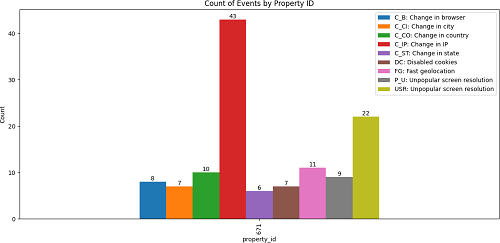In the ever-evolving landscape of financial fraud, cutting edge detection and prevention strategies are crucial for safeguarding assets and maintaining customer trust. This article explores the latest technologies and approaches in fraud detection, emphasising the critical role of AI driven solutions and multilayered security frameworks.
Fraud detection and prevention remain critical concerns for financial institutions, including banks and Non-Banking Financial Companies (NBFCs), as they strive to protect assets and maintain customer trust in an increasingly digital landscape. The complexity and sophistication of fraudulent activities have grown exponentially, necessitating the adoption of advanced strategies and technologies. Recent advancements in artificial intelligence (AI) and machine learning (ML) have significantly enhanced fraud detection capabilities, enabling real time analysis of vast datasets to identify suspicious patterns. These technologies can adapt to new fraud tactics, providing a dynamic defence mechanism that evolves with the threat landscape. A multilayered approach is crucial for effective fraud prevention, combining behavioural analytics, biometric authentication, and transaction monitoring.
This includes implementing robust transaction monitoring systems to detect Account Takeovers (ATO), fraudulent transactions, and conducting velocity checks. Financial institutions are required to classify frauds based on regulatory guidelines, such as those provided by the Reserve Bank of India (RBI) for NBFCs, and establish reporting mechanisms for frauds of specified magnitudes.To support this requirement, Sensfrx provides a robust framework for detecting and preventing financial frauds, enabling financial institutions to classify and report frauds in accordance with regulatory guidelines. By leveraging Sensfrx, financial institutions can also ensure regulatory compliance with the General Data Protection Regulation (GDPR) and the Payment Card Industry Data Security Standard (PCI DSS), thereby avoiding hefty fines and protecting customer trust. The use of Central Fraud Registries (CFR) to share information among financial institutions has become a key strategy in preventing fraud. Regulatory compliance, including adherence to the General Data Protection Regulation (GDPR) and the Payment Card Industry Data Security Standard (PCI DSS), is essential not only for fraud prevention but also for avoiding hefty fines. Recent statistics underscore the urgency of these efforts, with the Federal Trade Commission (FTC) reporting consumer losses of over 8.5 billion to fraud in 2023, a 7.5% increase from the previous year. To address these challenges, financial institutions are implementing comprehensive customer due diligence processes, providing regular staff training on fraud awareness, and conducting periodic fraud risk assessments.
Future directions in fraud prevention include the integration of blockchain technology for secure transactions, which has shown promise in reducing fraud in crossborder payments by up to 65%. As financial institutions continue to balance robust security measures with user experience, they must also ensure fair practices, such as providing affected parties an opportunity to be heard before classifying an account as fraudulent, in line with legal requirements. By leveraging advanced technologies, adopting a comprehensive multi-layered approach to security, and adhering to regulatory guidelines, financial institutions can significantly reduce the risk of fraud and protect both their assets and their customers’ trust in an increasingly complex financial ecosystem.
Figure 1: Count of Account Takeover (ATO) detection events detected by Property ID 671 using Sensfrx over a period of one month
These figures demonstrate the effectiveness of Sensfrx in detecting malicious events related to Account Takeover (ATO) and Transaction fraud for one of its customers, identified by Property ID 671. Figure 1 presents the count of ATO detection events, highlighting the number of instances where Sensfrx successfully identified and flagged suspicious activity related to account takeovers. Figure 2 presents the count of Transaction detection events, showcasing the number of instances where Sensfrx identified and flagged suspicious transactions.
Figure 2: Count of Transaction detection events detected by Property ID 671 using Sensfrx over a period of one month
The Writer is Mr. Jinendra Khobare, Solution Architect, Senfrx, SecureLayer7
Featured Article
 Matribhumi Samachar English
Matribhumi Samachar English




